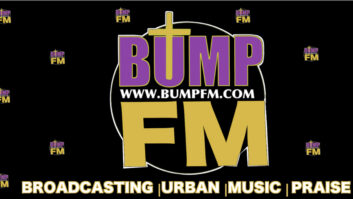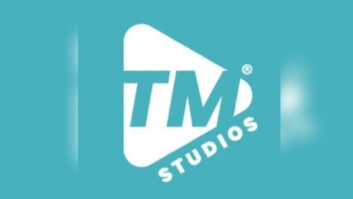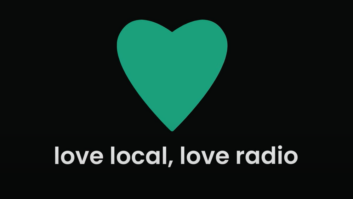Author and Connoisseur of Classic Radio ID Jingles From the ’60s and ’70s Takes Questions
This article is an excerpt from “The Second Jingle Book.” PAMS Productions Inc. of Dallas, referred to below, was one of the leading producers of radio ID jingles.
Q: What happened to the full jingle sound we used to hear? Are producers even using all-male groups as the dominant sound anymore? Frankly I think the synthetic music sounds cheap.
A: More than the vocal blend, it’s the instruments, or lack thereof.
To someone whose ears are accustomed to real brass and strings, synthetic music does sound cheap and thin. To people raised on hip-hop, rappers, Britney and that whole hee-haw gang, contemporary jingles sound natural, and anything with brass and strings sounds old-fashioned.
People listening to contemporary hit radio today were probably born in the 1980s – after disco, for heaven’s sake. These youngsters were eight years old when the Gulf War was going on, which seems like last week to me. They have a different frame of reference.
With respect to vocals, group singing in general is almost non-existent in pop music. With the exception of a few girl groups and boy groups, who mostly wail and improvise, actual harmony is extinct.
Certainly the type of chords used in earlier vocal groups is gone because it sounds “old.” I’m referring specifically to diminished, augmented sixth chords and major seventh chords, for you musical folks. In fact I once asked Jackie Dickson (now Jackie Merriman), one of the best Dallas singers, how she was doing, and she replied, “Oh, you know, thirds and sixths.”
Another casualty is that swingin’ style. In rap, not only is harmony gone; melody is MIA.
Q: I’m a jingle writer. How do I find the names of some of the production companies and advertising agencies in Chicago and other places?
A: When I was soliciting jingle business, I went to the library and got the “Advertising Red Books,” properly called “The Standard Directory of Advertising Agencies” and “The Standard Directory of Advertisers.” That was many years ago; they sell them online now, as well.
You can search and find all the agencies that specialize in broadcast, and then pick up the name of the broadcast producer at that agency. A demo CD to that person can sometimes be a start, especially if you follow with a phone call.
Usually the skills that make a great musical talent are not found in the same person with great self-promotional talents. But you need a little of both to succeed.
Q: What are your favorite PAMS packages that don’t get much recognition? (Note: PAMS Productions Inc. of Dallas was one of the leading producers of radio ID jingles.)
A: Here’s my list of favorite, non-series overlooked packages.
1. “WLS 70-71” – Probably the tightest, coolest package ever. Great vocals; in fact it was the peak of the PAMS sound. Most of these cuts would still work today.
2. “Super Country” – I’m not a big country fan, but this thing was smokin’.
3. “LOVE FM” – The 1969 package that ran on the ABC O&O stations. Very different, and it experimented with new rock sounds. Cool vocals, and it was recorded in stereo.
4. “Smart Set” – Magnificent orchestral arrangements. Probably the biggest group of musicians PAMS assembled. It also had a nice logo, although that was probably originally written by Tom Merriman for WIFE(AM)’s “Starbright” package at CRC. Very cool for the “better music” stations.
Q: Did you know the “Sonowaltz” cut from Series 18 was based on a recording called “Blue Brass Groove”? The original recording is from the big band of Julian “Cannonball” Adderley. It’s a composition by his brother Nate and can be found on the CD “African Waltz”(Riverside Records CD OJCCD-258-2, available from ZYX-Music). What’s the story behind this?
A: I was not aware of that, but based on the MP3 clip you sent me, it certainly seems to be taken from that song.
The main writer on Series 18 was Euel Box, the guy responsible for many PAMS jingle packages in the 1950s through about 1973. Several of the other cuts in Series 18 are borrowed from songs, too. Henry Mancini influenced a lot of PAMS jingles. Si Zentner, another bandleader, had a few “tribute cuts” in PAMS’ early series.
In an effort to sound contemporary, jingle writers took ideas from whatever hits were popular at the time. This was true right through the 1970s, when the influences included Sergio Mendez, Chicago, The Carpenters, Crosby Stills & Nash and others.
Sometimes PAMS even named cuts after the composers on the package lyric sheets. Examples that come to mind are “Mr. Lucky” (Mancini) in Series 18 and “Lalo Says” in Series 40, named after Lalo Schiffrin, who wrote the music for the “Mission: Impossible” TV series.
Q: What are the copyright considerations when designing a package that includes an existing song? Does it involve getting permission from the publisher and paying ongoing licensing fees?
A: There are two answers: Yes, there are copyright and licensing issues involved; and no, almost no one in Dallas or Memphis, another jingle hub, paid any attention to them.
I could point out literally hundreds of instrumental and lyrical rip-offs perpetrated by the jingle companies, created and sold. Perhaps because only a bar or two would be stolen, claimants didn’t bother prosecuting.
One example of a station that paid for the rights is WABC(AM), New York, which licensed “I’ll Take Manhattan” for an annual fee.
Q: I heard a great jingle that JAM Creative Productions did for you some time ago. It was a phone message jingle sung to the tune of “In the Mood.” What’s the story?
A: That jingle appears on the marvelous JAM 1979 promotional album, which is where you probably heard it. (Visit JAM at www.jingles.com )
“On the Phone” was created when we had a little time left at the end of a session for one of our retail clients, which Jon Wolfert, president of JAM, was producing. The drums on the phone jingle were actually a very primitive machine, I played piano, and singer/arranger/musician Chris Kershaw played bass. It took only a short time to complete, but I’ve gotten more comments on that over the years than most of the other stuff we did.
I must credit Mr. Wolfert for bringing that together. He took my silly lyrics and turned it into a polished production.
Q: What is it about the key of F that make jingle producers want to use it repeatedly?
A: Many jingles are in F because this often puts the highest part, soprano, on C above middle C, a nice high spot yet not too high. It also allows Mr. Bass Man to end up on an F at the bottom of the bass clef. In other words, it’s a good range for the singers of a traditional vocal group.
All-guy jingles are more likely in C or D because of where that puts the lead guy.
And here is more information than you wanted: If it’s a really mellow jingle, the writer will place it a little lower on the staffs so that the group can sing softer, with more air, and create a breathier sound. You need a lot of energy to hit those high notes.
Q: Is it true that some of the 1960s PAMS jingles we heard on WABC(AM), New York were not sung in Dallas?
A: It is true. An early assortment of cuts from Series 16, 17, 18, 22 and 23 was sung with New York singers. A second session, with cuts from Series 26, was also sung by that same group.
Jon Wolfert, president of PAMS Productions Inc., tells me that the first session was done at Olmstead Sound Studios, One E. 54th St., New York 22, N.Y. Their phone was PLaza 1-0890.
WABC historian Peter Kanze has the mono reel of the second session. Reading the label, he learned that it was held Aug. 24, 1963, at A&R Recording, 112 W. 48th Street in New York. The phone number at that studio was JUdson 2-1070. The instrumental tracks were supplied by PAMS, 18 of them in all, and the singers recorded a total of 149 takes.
The reason these weren’t sung in Dallas? WABC was an American Federation of Television and Radio Artists (AFTRA) signatory, and all on-air talent belonged to the union, according to Wolfert.
“ABC management was afraid there would be a problem if word got out that the station was using jingles performed by non-union talent. Thus PAMS sang the cuts with N.Y. union singers to keep the peace.”
“The Second Jingle Book” is available through www.kenr.com.












